You are here
Malaya Almatinka narural lanmark 100 years ago.
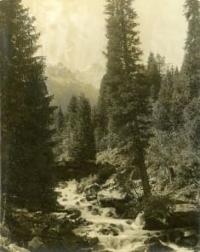
Sightseeing tours in Malaya Almatinskoye Gorge.
"... from the V.P. Kuznetsov plant to Verny there were so many apricots, apple trees and generally different types of deciduous trees that it was difficult to find horses that had left the yard in these groves."
Pavel Zenkov.
Sights of Medeo natural landmark.
In 1854, choosing a place for the foundation of a fortress, and then a city, the first builder M. Peremyshlsky wrote to his boss, Governor G. Gasfordt in Omsk: “Having examined the First and Second Almatys (read Malaya and Bolshaya Almatinka, - author's note) and the valley between them with engineer-lieutenant Aleksandrovsky, we found that the timber harvesting was convenient, the large amount of excellent arable land cut by irrigation ditches, pastures and hayfields far surpassed the valleys on Issyk and Talgar, which is why we proposed Almaty as the site of the future settlement.”
Therefore, it can be rightfully assumed that the city of Verny, the future Almaty, grew on the Malaya Almatinka River. An ordinary mountain river, starting 30 km from the city on the Tuyuk-Suu glaciers. It served as the eastern border, behind which the State Garden was located, and later private gardens were planted.
As everywhere, the river was the center of life. At first, people swam in it, washed clothes, watered horses, until they came to their senses and began to clean up so as not to pollute the water. But on Epiphany, they put up Jordans and fonts. It also decorated the city with its green floodplain, with pebbles, in the middle of which crystal-clear water ran.
But the water of Malaya Almatinka served not only for drinking and irrigation, 160 - 100 years ago it was almost the only source of energy. The river attracted merchants who built their handicraft and industrial enterprises here. The first to build a water mill in Bolshaya Stanitsa in 1858 was the merchant Alimzhanov, after him, moving to the south, Vasily Petrovich Kuznetsov built a brewery, alcohol and wine factories in 1858 - 1865.
By the age of 80, his enterprise had become the largest in the city, employing up to 135 workers and craftsmen. Among the local merchants, as entrepreneurs were called at that time, Maria Alexandrovna Kolokoltseva stood out. Distinguished by her business acumen, inexhaustible energy and enterprise, in 1870, on the right bank of the Malaya Almatinka, she opened the first sawmill in Verny, which operated mainly in the summer.
Then she expanded production, setting up a workshop for the manufacture of iron products for buildings under construction in the city (bolts, hinges, gratings, etc.). In the city, this was the most highly organized enterprise in technical terms, where the source of energy was the force of water, turning a water wheel, which in turn set all the mechanisms in motion (saws, drills, sharpeners, etc.).
A little further upstream, there was a candle factory. In subsequent years, there were already dozens of mills on the river, the largest of which was Gavrilov's mill in the 20th century (a three-story wooden building called "Smychka" survived until the 1970s).
A water intake for the Main Ditch was also built here. Thus, the water first set the mill wheels in motion, and then was directed to the Main (Magistalny) Ditch, from where it was distributed throughout the city through street ditches. The river floodplain above the city was also the center of the city's gardens and summer cottages, and the gorge of the Malaya Almatinka River became a favorite vacation spot for residents.
Therefore, it is not surprising that already in the first years of Verny's existence, a cart road leading to the mountains was laid along the river as a continuation of Kolpakovsky Avenue. Of course, it was primitive, without any covering, the fragile wooden bridges across the river were constantly washed away by spring floods, summer showers and mudflows.
It was also one of the main threats to Verny, which was confirmed in July 1921, when a mudflow destroyed one quarter of the city and took the lives of several dozen people. But the river was full-flowing even on ordinary summer days. As old-timers said, at the city level, even a two-horse carriage could hardly ford it, and in the first years, the Cossacks caught up to 300 poods of marinka and osman in the river.
Despite all this, wild nature, starting right beyond the outskirts of the city, was preserved for a long time around. As the oldest resident of the city, Pavel Zenkov, wrote: “... from the V.P. Kuznetsov plant to Verny there were so many dried apricots, apple trees and generally different deciduous tree species that the from the yard it was difficult to find horses in these groves."
Upstream of the river, near the mouth of the Butakovka, there were the bishop's and governor's dachas, dachas of officials and officers. Kolpakovsky's country house in the Maloalmatinsky gorge was built in the 70s of the 19th century.
It was a spacious wooden mansion with a mezzanine, a semi-basement floor, a cellar, a veranda, and ice houses.
The house had 4 stoves, fireplaces, 42 windows. A special attraction of the dacha was the home zoo in the garden, which was looked after by a whole staff of employees. Kolpakovsky was an animal lover, he himself collected birds, mountain minerals, insects, later donating them to scientific and public organizations (societies, museums, universities).
The list of animals and birds kept at different times was extensive and included such rare species as snow leopard, tigers, kulans, argali, marals, Siberian ibex, saiga, yaks, pheasants, partridges, swans, eagles, vultures, etc. The governor willingly allowed excursions from city residents to his menagerie; most often these were high school students. Sometimes in the summer, a bear from the menagerie was exhibited on a chain in the city park.
Botanist A. Regel, who conducted excursions in the Maloalmatinsky Gorge in 1878, wrote:
- “The garden at the mountain dacha of the military governor is located in the Maloalmatinsky Gorge, 8 miles from the city. In front of the dacha there is a pond and 2 fountains. Kulans and deer are kept. Nearby is the dacha of Major General Mikhailovsky.”
Opposite the mouth of the Butakovka River stands the high Krestovaya (or Krestopoklonnaya) Mountain, covered with aspen and ash trees, which received its name in the 1880s because of the seven-meter wooden cross erected on the summit by the head of the Turkestan - Tashkent Diocese, His Grace Bishop Neophyte (N.V. Nevodchikov).
The ascetic bishop, known for his prayerful devotion to the Christian faith, loved to take solitary walks here while living in a dacha on the bank of the noisy Almatinka River. In the Medeu tract, in 1915, through the efforts of the forest inspector E. Baum and the forester V. Perovsky, the Forest School was built.
The artist Khlodov painted his pictures here. Many travelers and explorers, whose names are known to the entire scientific world, visited here: the botanist Krasnov, N.M. Przhevalsky, botanists V. Sapozhnikov and V. Lipsky, artist V. Vereshchagin.
A little to the side at the foot of Mokhnataya Sopka, monks founded their monastery at the beginning of the XXth century. Local tourists climbed Mount Kumbel, the Talgar Pass, the Tuyuk-Su glaciers and the glacier that was named Bogdanovich Glacier.
But not a single tourist was able to climb the seemingly inaccessible Maloalmatinsky Peak (conquered in 1930). Verny foresters, among whom was the famous E. Baum, planted groves in the gorge: Birch, Oak, Karagachevaya, which still exist today (and were mostly destroyed by hurricanes in 2011).
At the end of the 19th century, the Verny City Council realized that it was not appropriate to locate industrial enterprises above the city, and especially along the banks of the river, the water from which the townspeople drank. Industrial enterprises began to be located below Tashkentskaya Street on the northern side of the city, but the brewery operated for a long time even during the Soviet years.
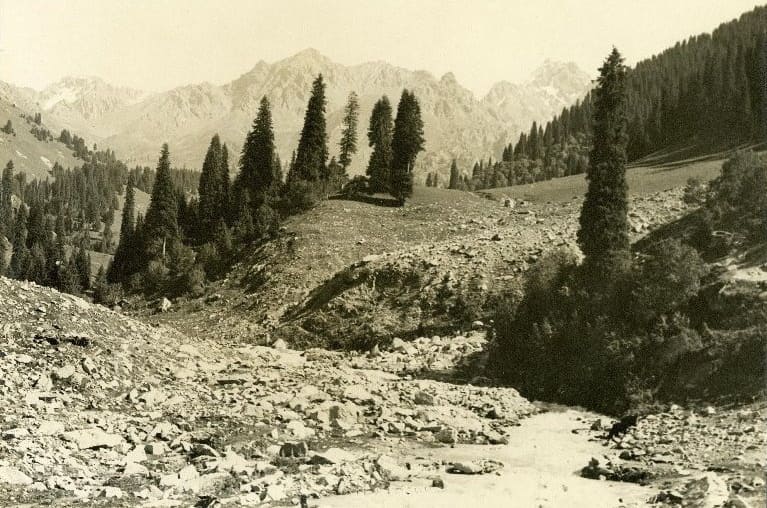
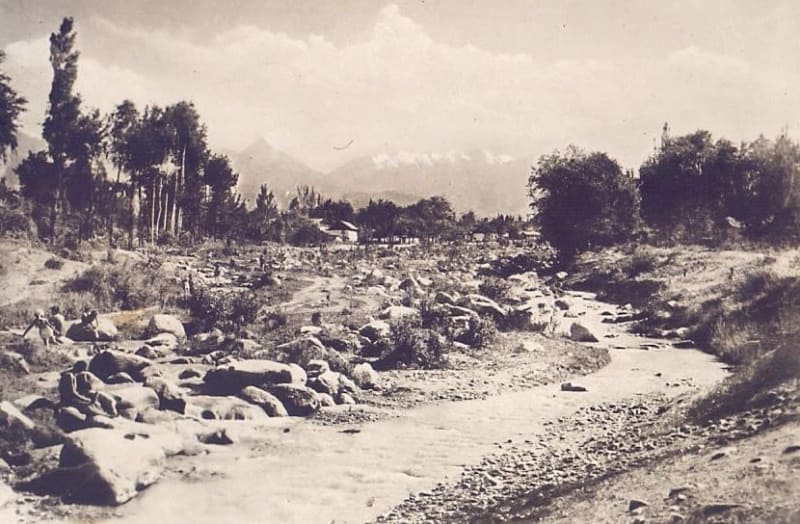
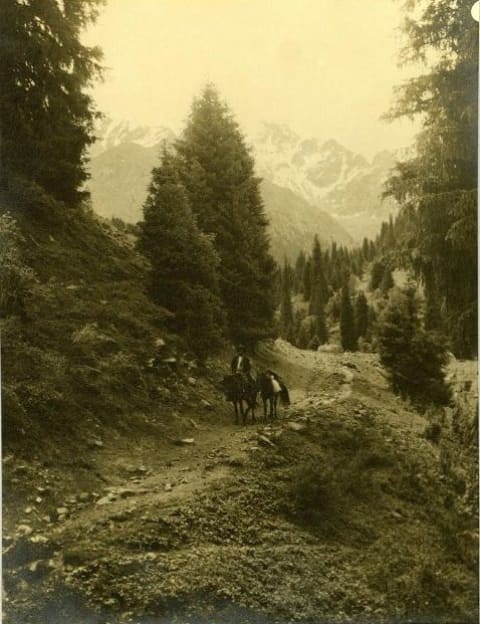
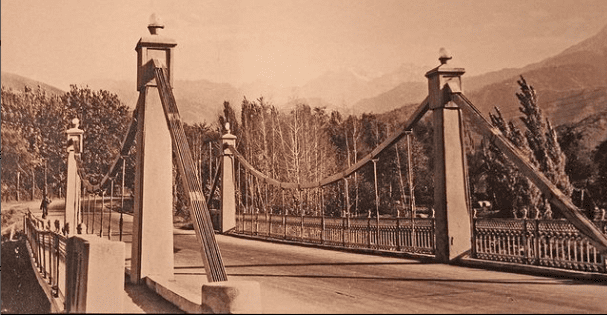
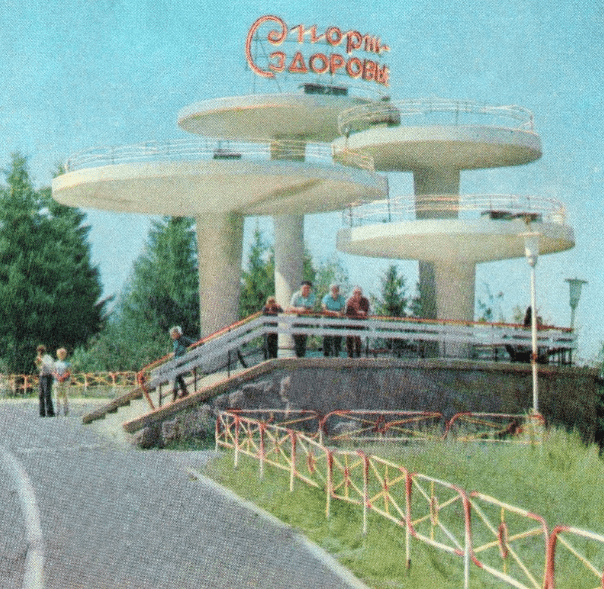
Authority:
"Essays on the History of Kazakhstan Semirechye". Alexander Lukhtanov.







